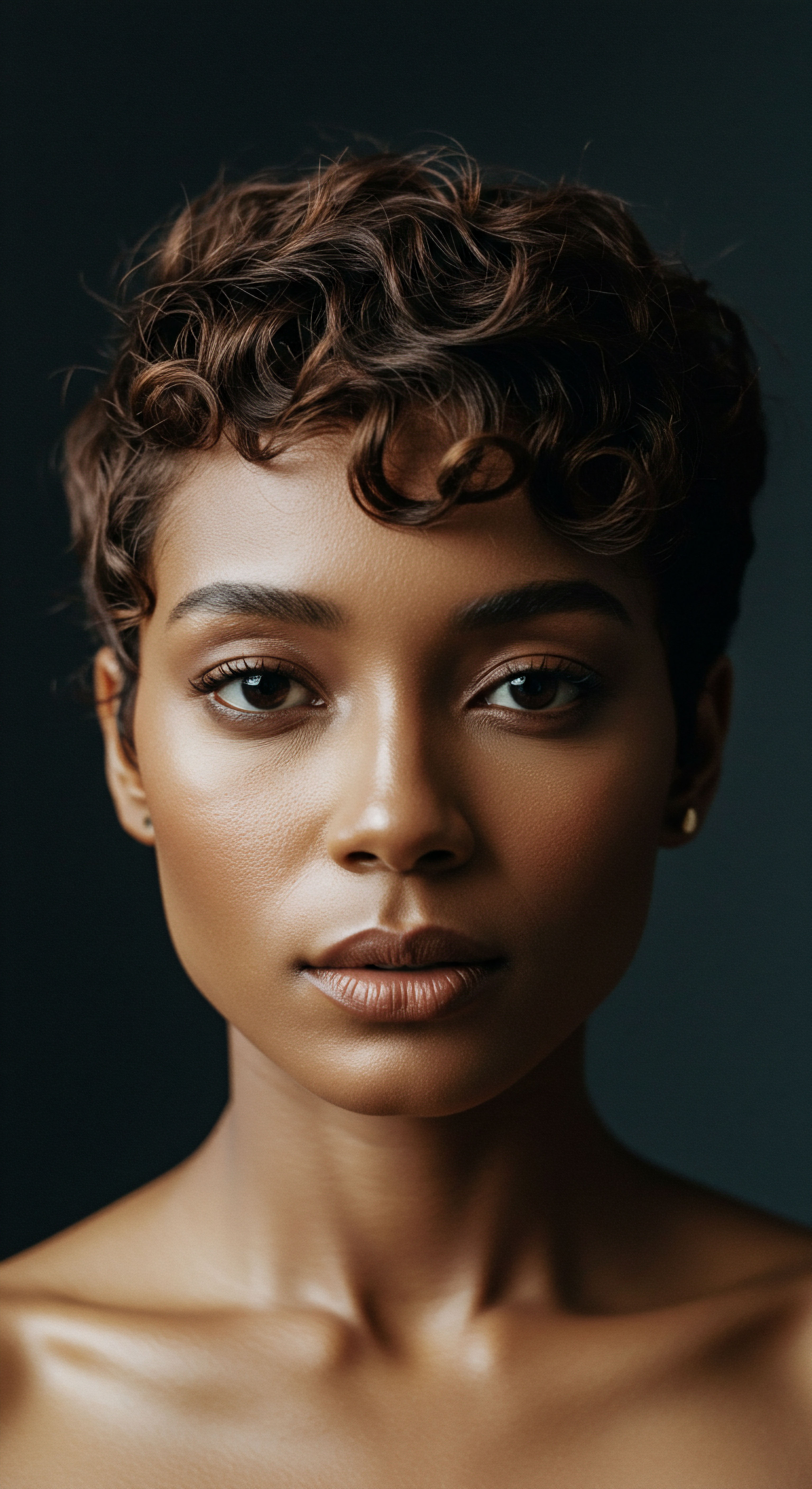
Roots
The quiet hum of life beneath our hair, often unheard, unseen, yet deeply influential. It is the scalp microbiome, a bustling, microscopic world where countless organisms reside, shaping the very environment from which our strands emerge. For generations, before scientific lenses focused on microbial communities, textured hair traditions held an intuitive understanding of this delicate balance.
These practices, passed down through whispers and hands, recognized the scalp as the true garden where healthy hair takes root. The query of whether these ancestral methods can truly support a balanced scalp microbiome invites us to look beyond modern conventions, seeking wisdom in practices that honor the inherent rhythms of our bodies and the living systems that cloak us.

What is the Scalp Microbiome?
Our scalp is a unique ecological niche, distinct from other skin areas. It boasts a rich tapestry of sebaceous glands and hair follicles, creating a moist, lipid-rich environment. This specific habitat favors certain microbial residents, primarily the fungus Malassezia and bacteria such as Cutibacterium Acnes and Staphylococcus Epidermidis. These microorganisms are not merely passive inhabitants; they actively participate in maintaining scalp health.
They help regulate sebum production, contribute to the skin’s acidic pH, and produce antimicrobial peptides that offer a protective barrier against harmful pathogens. A balanced scalp microbiome acts as a vigilant guardian, modulating inflammatory responses and safeguarding against infections.
However, this delicate equilibrium is susceptible to disruption. Factors ranging from genetics, diet, and environmental pollutants to our daily hair care routines can sway its composition. An imbalance, often termed dysbiosis, can pave the way for various scalp conditions, including dandruff, seborrheic dermatitis, and even certain types of hair loss.
The scalp’s microscopic world, a complex community of bacteria and fungi, profoundly influences the vitality of our hair.
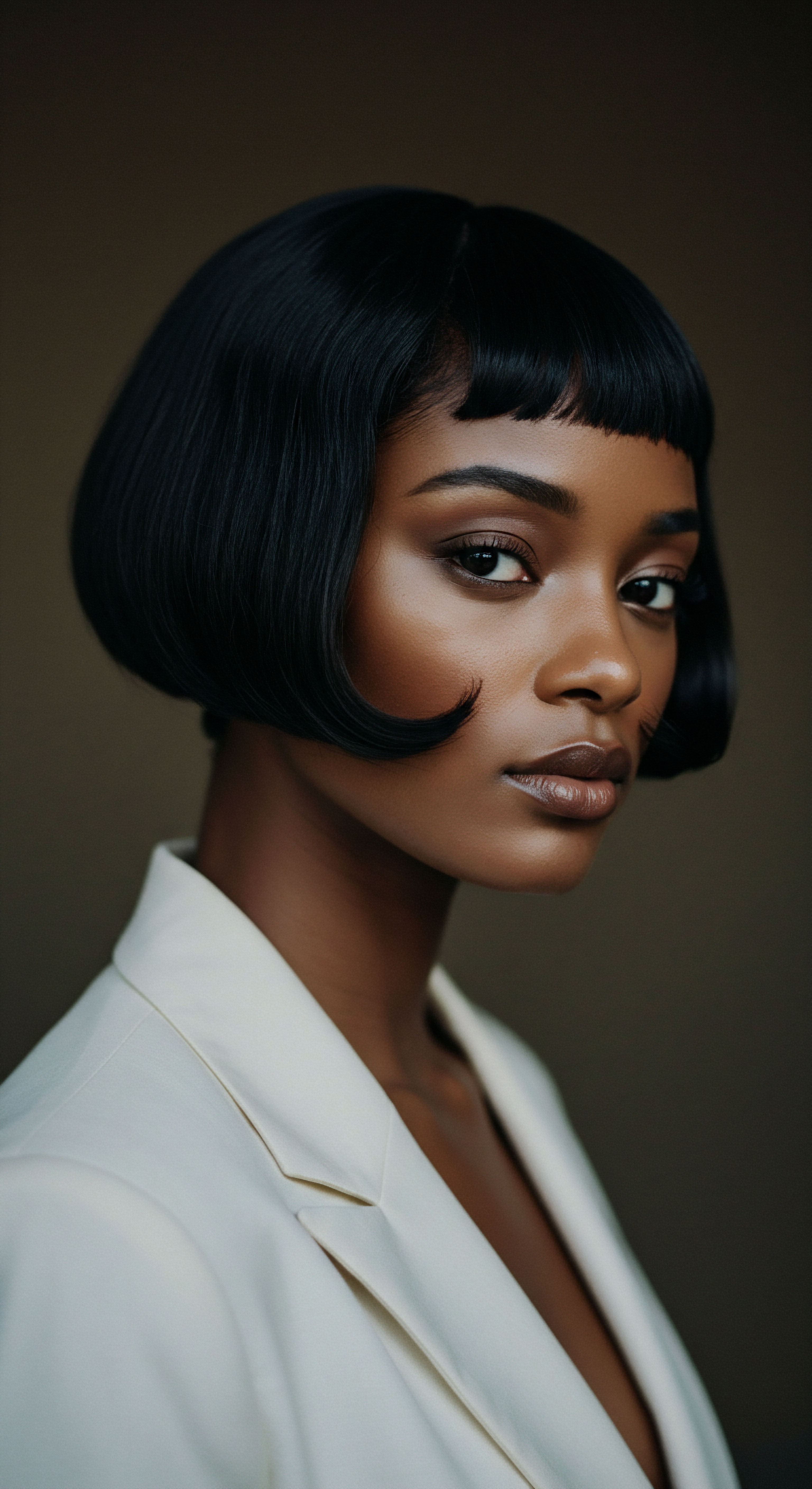
Ancient Wisdom on Scalp Care
Long before the term ‘microbiome’ entered scientific discourse, traditional hair care practices across diverse cultures instinctively addressed scalp health. These practices were not born from laboratory analyses but from generations of observation, experimentation, and a deep reverence for natural remedies. Across Africa, in many communities, hair care rituals were, and remain, deeply intertwined with cultural identity and well-being. Ingredients like Shea Butter, Coconut Oil, and Aloe Vera were not chosen at random; they were selected for their perceived abilities to nourish and protect, with a consistent prioritization of moisture and scalp health.
Similarly, Traditional Chinese Medicine (TCM) views hair health as a direct reflection of internal bodily balance, particularly the health of one’s blood. TCM practices for hair often involve herbal remedies and techniques aimed at cooling excess blood heat and enhancing blood circulation to the scalp, thereby supporting hair follicles and relieving itchiness. These traditional systems understood that a healthy scalp was the bedrock for vibrant hair, even if their understanding of ‘health’ was framed through different lenses than modern microbiology.
The common thread running through these historical approaches is a gentle, consistent interaction with the scalp, often involving natural elements. They lean into practices that appear to work in concert with the body’s intrinsic processes, rather than against them. This stands in gentle contrast to some contemporary methods that might inadvertently strip the scalp of its natural oils or disrupt its microbial harmony through harsh chemicals or excessive manipulation.
| Ingredient Shea Butter |
| Traditional Use/Source West Africa |
| Perceived Scalp Benefit Moisturizing, soothing, protecting |
| Ingredient Coconut Oil |
| Traditional Use/Source Tropical regions (Africa, Asia) |
| Perceived Scalp Benefit Hydration, anti-fungal properties |
| Ingredient Aloe Vera |
| Traditional Use/Source Various global regions |
| Perceived Scalp Benefit Soothing, healing, moisture retention |
| Ingredient Dong Quai |
| Traditional Use/Source Traditional Chinese Medicine |
| Perceived Scalp Benefit Blood circulation, scalp nourishment |
| Ingredient Henna |
| Traditional Use/Source North Africa, Middle East, South Asia |
| Perceived Scalp Benefit Anti-inflammatory, antibacterial for scalp |
| Ingredient This table highlights a few traditional ingredients and their long-held associations with scalp health. |

Can Scalp Biome Diversity Differ by Hair Type?
The unique physical characteristics of textured hair, such as its helical shape and varied porosity, influence how products interact with the hair shaft and how sebum distributes along it. This, in turn, can affect the microenvironment of the scalp. Research indicates that the composition of the scalp microbiome can vary significantly between individuals, influenced by factors such as pH, hydration, sebum levels, and even ethnic origin. While broad generalizations about microbiome differences solely based on hair curl pattern require more dedicated research, it is reasonable to consider that variations in sebum distribution and moisture retention inherent to different hair types could subtly shape their microbial communities.
A study comparing bacterial community structures on scalp hair and scalps found significant differences in terms of cell density and diversity between these sites. It also noted that the bacterial community structure on hair was distinguishable from that on the scalp, even though major bacterial species were commonly present. This suggests that the immediate environment of the hair shaft itself, influenced by its texture and care, plays a role in shaping its microbial residents, which are intimately linked to the scalp’s overall microbial balance. Understanding these subtle distinctions allows for a more personalized approach to care, one that acknowledges the unique biological blueprint of each head of hair.

Ritual
To consider the daily and periodic acts of caring for our hair as mere chores would be to miss their deeper resonance. These rituals, whether a weekly cleansing or a quiet moment of oiling, are where intention meets practice, where ancient wisdom finds its contemporary application. As we seek to understand how these cherished habits might align with the modern scientific discourse of the scalp microbiome, we step into a space of shared knowledge, where techniques are explored with gentle guidance, inviting a deeper connection to our crowns.

The Practice of Cleansing and Its Scalp Impact
The act of cleansing is foundational to scalp health, yet its frequency and method have been subjects of varied opinion. Traditional practices often involved less frequent washing than contemporary norms, sometimes utilizing natural clays, herbal infusions, or mild, saponified plant extracts. For textured hair, which can be prone to dryness due to its structure and uneven sebum distribution, daily shampooing has historically been less common. Many women of African descent, for instance, shampoo their hair anywhere from several times a week to once a month, acknowledging its innate dryness.
Modern scientific understanding sheds light on the rationale behind this. Over-washing, particularly with harsh detergents, can strip the scalp of its natural oils and beneficial microbes, potentially leading to an imbalanced environment. Conversely, infrequent washing may allow for the overgrowth of certain species, like Malassezia, which thrives on sebum and can contribute to dandruff and seborrheic dermatitis.
The rhythm of hair cleansing, often guided by cultural practices, directly shapes the scalp’s microbial landscape.
A balance is sought, where cleansing removes excess oil, dirt, and dead skin cells without disrupting the delicate microbial ecosystem. Gentle, pH-balanced products, often found in formulations inspired by traditional ingredients, are increasingly recognized as supportive of scalp health. Regular, but not excessive, cleansing creates a hospitable environment for the scalp’s microscopic residents to flourish harmoniously.

Does Scalp Massage Alter Microbiome Balance?
Scalp massage, a time-honored component of many traditional hair care routines, extends beyond mere relaxation. It is a practice deeply embedded in wellness, believed to stimulate circulation and promote overall scalp vitality. In Traditional Chinese Medicine, for example, specific massage techniques are used to improve blood flow to hair follicles and relax the nervous system.
From a scientific perspective, scalp massage increases blood flow, which can nourish hair follicles and support hair regrowth. Beyond circulation, it exerts stretching forces on dermal papilla cells, which are crucial for hair growth, potentially upregulating genes associated with healthy hair. While direct studies explicitly linking scalp massage to changes in scalp microbiome composition are still emerging, the indirect benefits are compelling.
- Improved Circulation ❉ Enhanced blood flow can deliver essential nutrients and oxygen to the scalp, potentially creating a healthier environment for beneficial microbes.
- Sebum Regulation ❉ Regular massage may help regulate sebum production, preventing either excessive oiliness or dryness, both of which can disrupt microbial balance.
- Exfoliation Support ❉ Gentle massaging can aid in the natural exfoliation of dead skin cells, preventing buildup that might harbor undesirable microbial overgrowth.
It is plausible that a scalp that is well-circulated, balanced in its oil production, and free from excessive buildup would naturally present a more stable and hospitable environment for a diverse and balanced microbiome. The tactile connection of massage also provides an opportunity for mindful application of natural oils or herbal infusions, further supporting the scalp’s condition.
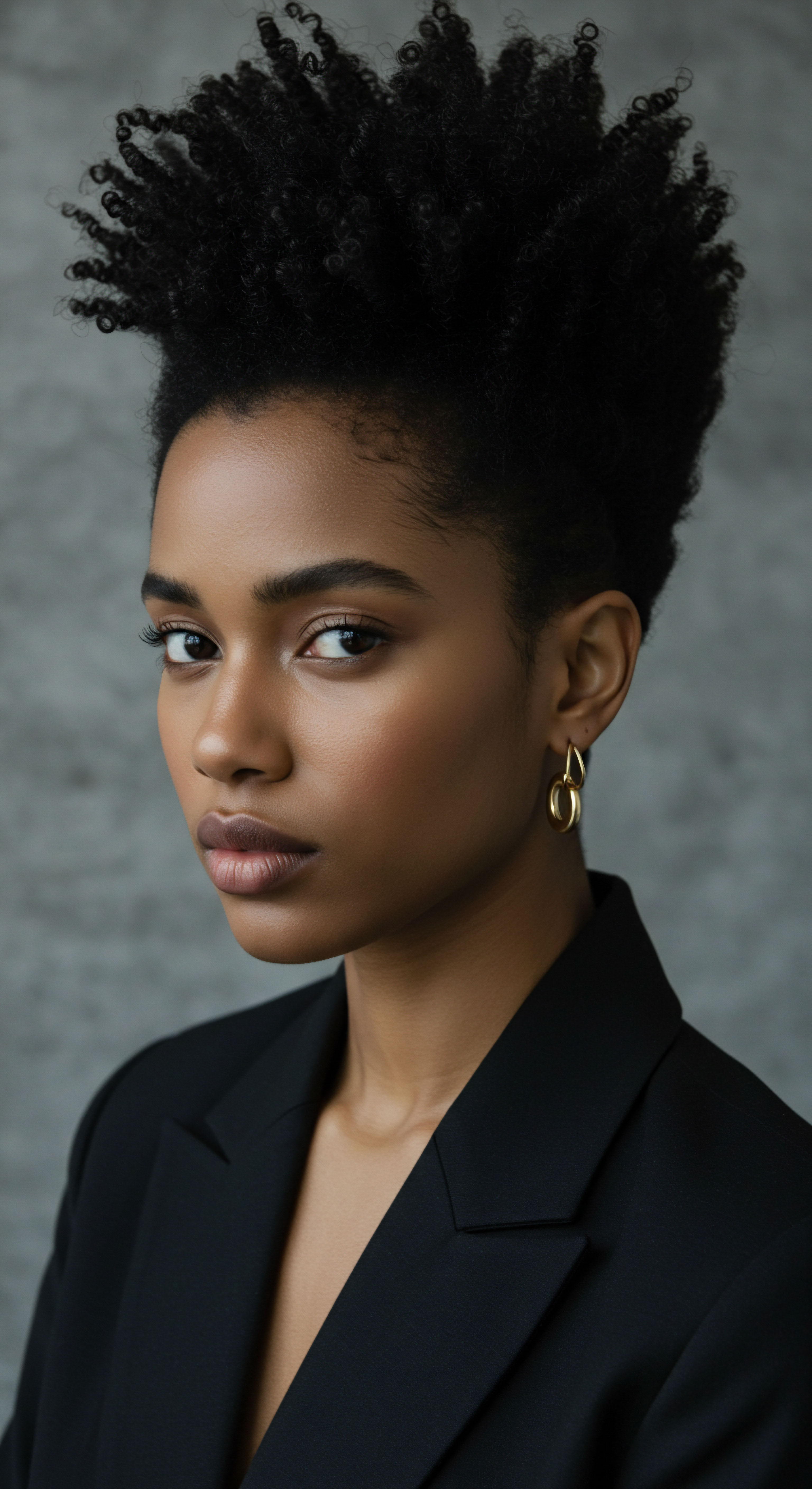
Traditional Oils and Scalp Health
Oils such as Coconut Oil, Olive Oil, and Jojoba Oil have been mainstays in traditional hair care for their moisturizing and protective qualities. In African hair care, these oils are frequently used to moisturize hair and scalp, especially given the inherent dryness of textured hair.
From a scientific standpoint, these oils possess properties that could influence the scalp microbiome. Coconut Oil, rich in fatty acids, offers hydrating benefits and has demonstrated antifungal and antibacterial properties, potentially reducing the risk of infections and supporting overall scalp health. Olive Oil is also noted for its anti-inflammatory and antibacterial attributes, capable of soothing an irritated scalp and reducing dandruff. Tea Tree Oil, while often used diluted due to its potency, has strong antiseptic and antifungal qualities, frequently appearing in formulations designed to alleviate dandruff symptoms.
The application of these oils, often accompanied by gentle massage, can contribute to a well-conditioned scalp. When used judiciously, without causing excessive buildup that could suffocate follicles, these traditional oils can support the skin barrier and help maintain a balanced microbial population by inhibiting the growth of certain problematic microorganisms while nourishing the scalp. The wisdom of applying these natural lipids aligns with the need to maintain the scalp’s protective film and support its microbial inhabitants.

Relay
Moving beyond the immediate practices, we are invited to consider the intricate interplay of science, culture, and individual biology that shapes scalp health. How do the enduring traditional hair care practices truly intersect with the complex, microscopic world of the scalp microbiome, and what insights can this convergence offer us? This deeper inquiry demands a look at the subtle mechanisms, the scientific validations, and the cultural contexts that allow us to understand the profound connection between heritage and cellular well-being.

The Microbial Ecosystem and Hair Growth
The scalp microbiome is a dynamic ecosystem, its health inextricably linked to the vitality of our hair. A balanced microbial community supports the scalp’s barrier function, modulates immune responses, and helps maintain the optimal pH for healthy hair growth. Dysbiosis, an imbalance in this microbial community, can trigger inflammation and oxidative stress, both of which negatively impact hair follicles and can contribute to hair thinning and loss.
Specific microorganisms play significant roles. Malassezia species, while natural residents, can overgrow and contribute to dandruff and seborrheic dermatitis, partly by producing pro-inflammatory oleic acid. Conversely, beneficial bacteria like Cutibacterium Acnes and Staphylococcus Epidermidis are involved in lipid metabolism and the production of antimicrobial peptides that protect the scalp.
A healthy ratio between these populations is often seen as a marker of scalp well-being. For instance, studies on various populations, including Indian, French, Chinese, and Brazilian, have shown that a higher ratio of Cutibacterium Acnes to Staphylococcus Epidermidis is associated with a healthy scalp.
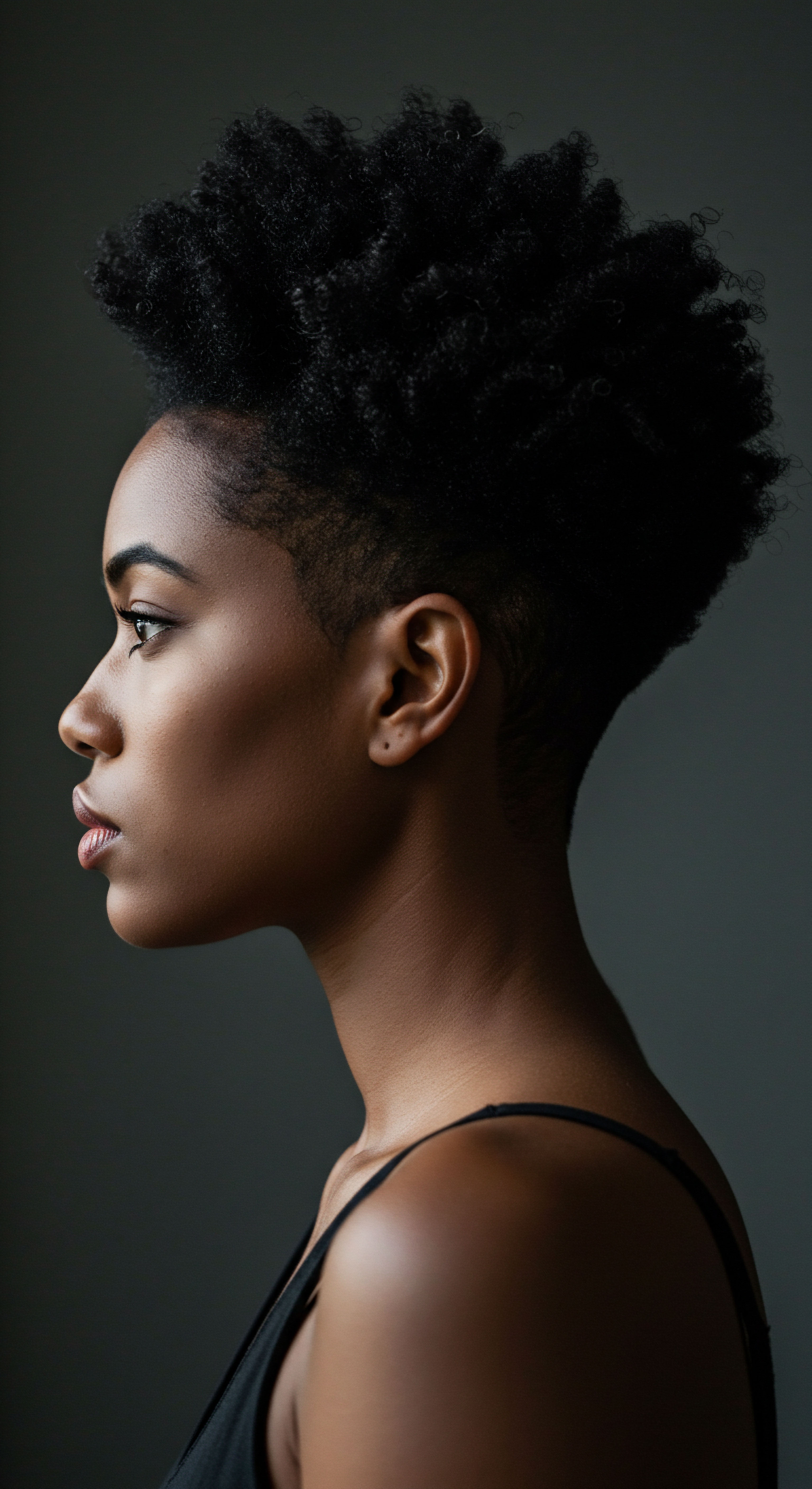
Do Traditional Methods Influence Microbial Diversity?
Traditional hair care practices, with their emphasis on natural ingredients and gentle handling, often inadvertently promote conditions conducive to microbial balance. Consider the use of natural oils. While some myths suggest natural oils always benefit the scalp, the reality is more nuanced; the right type and amount are crucial.
However, many traditionally used oils, like coconut and olive oil, possess known antimicrobial and anti-inflammatory properties. These properties can help to regulate the growth of certain microorganisms, potentially preventing the over-proliferation of problematic species while supporting the overall microbial diversity.
For example, a study examining the effects of a traditional Chinese herbal essence on scalp inflammation highlighted its blend of traditional herbs and scientifically recognized ingredients like Niacinamide (Vitamin B3) and Piroctone Olamine. This combination worked to soothe the scalp, reduce inflammation, and regulate scalp health by preventing fungal growth. This points to a convergence where ancient knowledge, when examined through a modern scientific lens, reveals effective mechanisms for supporting the scalp’s delicate ecosystem.
The long-held practices of traditional hair care often align with modern scientific understanding of scalp microbiome balance.
Furthermore, the emphasis on less frequent, yet thorough, cleansing in many textured hair traditions, coupled with protective styling, may contribute to a more stable scalp environment. Infrequent washing, if not balanced with proper care, can lead to issues, but a mindful approach avoids stripping the scalp of its protective lipids and beneficial microbes. The cultural practice of moisturizing the scalp and hair, prevalent in African diaspora hair care, helps maintain the scalp’s barrier function, which is critical for microbial harmony.
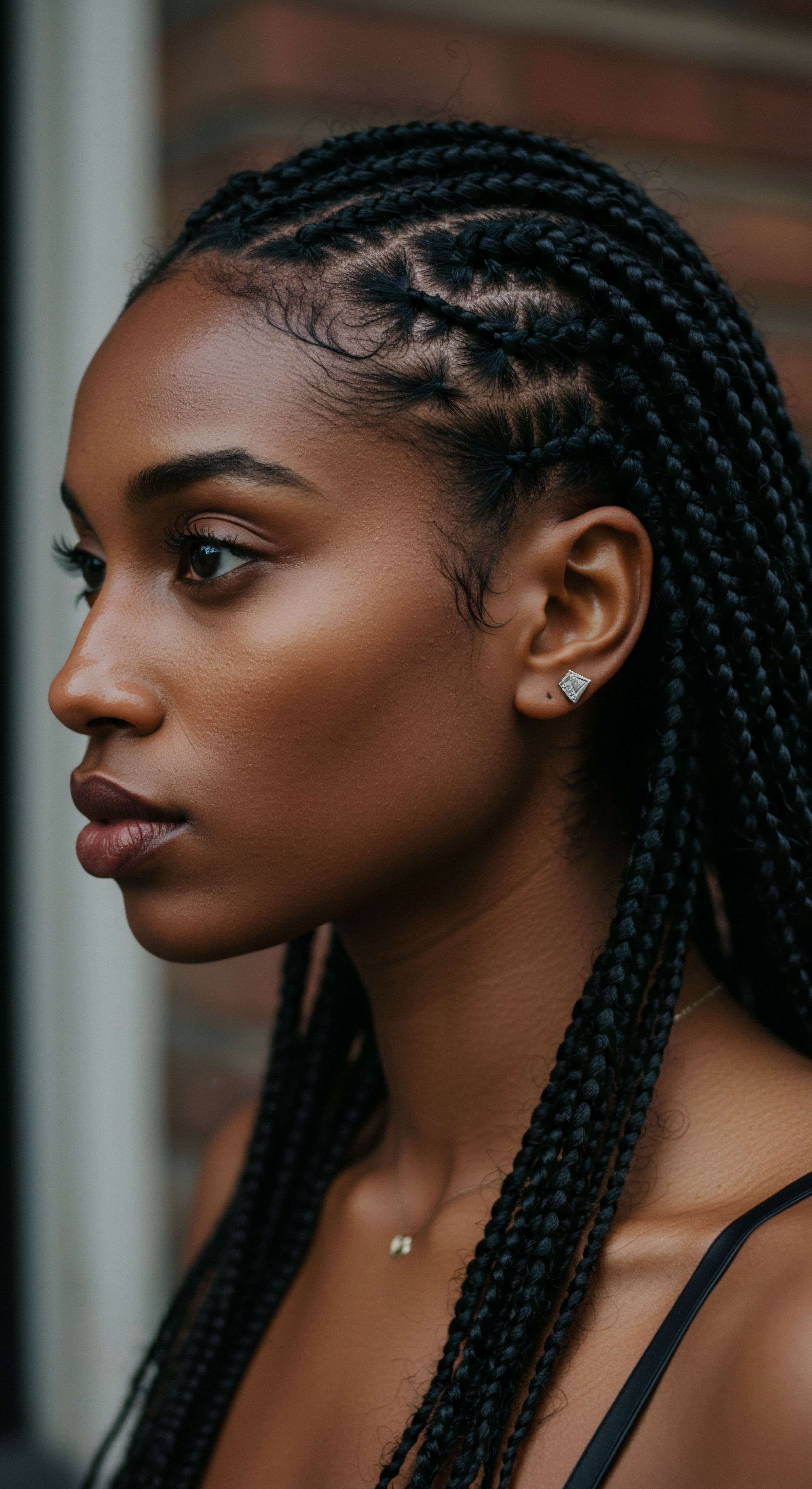
A Case for Controlled Washing Frequency and Scalp Health
A common point of contention in hair care discourse centers on washing frequency. Traditional practices, especially for textured hair, often lean towards less frequent washing to preserve moisture. However, some modern perspectives advocate for more regular cleansing to remove buildup. This apparent conflict finds resolution in understanding the scalp microbiome.
A notable study, Punyani et al. (2021), found that cleansing hair 5-6 times per week led to the highest overall satisfaction with hair and scalp conditions, including hair loss, hair shaft fragility, softness, and lustre. This was supported by both objective and subjective participant surveys, irrespective of age or gender. Critically, daily shampooing did not reduce or deprive the scalp of moisturizing sebum, as scalp lipid concentrations remained essentially the same as those who shampooed once per week.
This research challenges the widely held belief that frequent washing necessarily strips the scalp of its natural oils or disrupts its microbial balance, suggesting that the type of product and gentle application may be more influential than frequency alone. The study implies that a balanced, healthy scalp, even with frequent washing, can maintain its microbial milieu, especially when using appropriate products. This data, while perhaps surprising to some who limit washes, underscores the importance of proper cleansing for maintaining a scalp environment where beneficial microbes can thrive, free from excessive buildup that can lead to imbalances.

Beyond the Surface ❉ Internal and External Influences
The scalp microbiome is not an isolated entity; it exists within a complex system influenced by both internal and external factors. Genetics play a substantial role, determining individual skin characteristics like sebum production and hair density, which in turn affect microbial profiles. Environmental elements, such as humidity and pollution, also shape the microbial composition. High humidity, for example, can support the overgrowth of Malassezia.
Internally, diet, stress, and hormonal variations can impact the scalp’s microbial balance. Traditional systems, like TCM, have long recognized the connection between internal balance and external manifestations, including hair and scalp health. Their remedies often address systemic imbalances, not just topical symptoms.
For instance, TCM approaches use herbs like Dong Quai to invigorate blood and support the Kidneys, believed to be linked to hair vitality. This holistic perspective, which considers the body as an interconnected system, aligns with the growing scientific understanding that overall wellness significantly impacts the scalp microbiome.
The convergence of traditional wisdom and modern science suggests a path forward that respects ancient practices while integrating contemporary knowledge. It is a path that advocates for gentle, informed care, acknowledging the unique needs of textured hair, and celebrating the intricate biological dance that supports its vibrancy.

Reflection
The journey through traditional hair care practices and their potential to support scalp microbiome balance reveals a profound truth ❉ the wisdom of the past, often passed down through generations, holds deep relevance for our present understanding of well-being. It is a gentle reminder that our connection to our hair is more than superficial; it is a living, breathing relationship with the intricate ecosystems that sustain us. As we continue to uncover the scientific underpinnings of ancient rituals, a path opens for care that is both deeply rooted and intelligently informed, honoring the delicate balance of our bodies and the rich heritage of our hair.
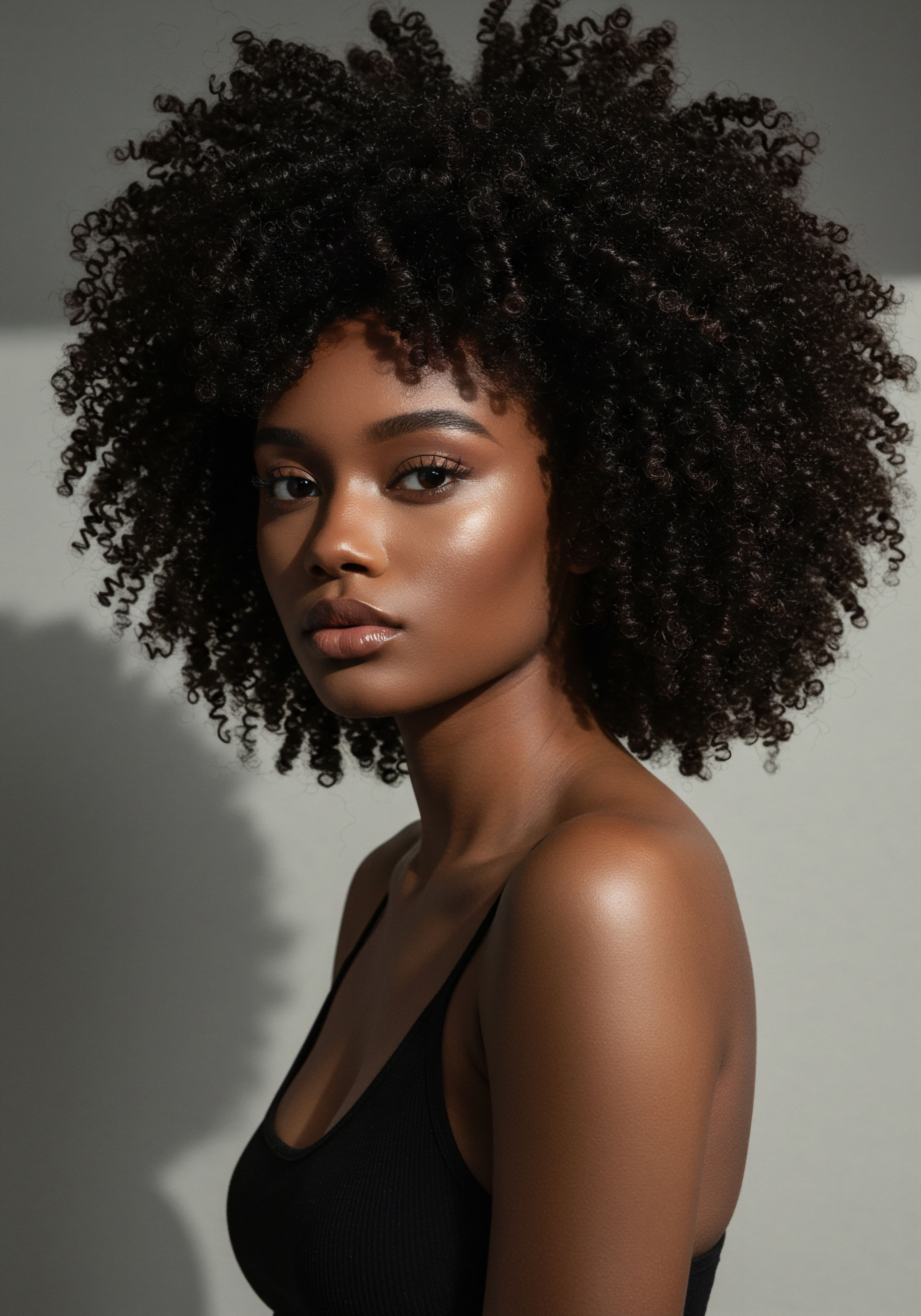
References
- 1. Abdul Rahim, Sumayya. Beyond the Flakes ❉ Malassezia furfur and the Quest for Healthy Hair. LAP Lambert Academic Publishing, 2015.
- 2. Gopinath, V. et al. Scalp Microbiome Explained ❉ What’s Living on Your Scalp and Why It Matters. News-Medical.Net, 2025.
- 3. Clavaud, C. et al. “The Human Scalp Microbiome ❉ An Overview of Its Composition and Function.” Journal of Clinical & Aesthetic Dermatology, vol. 16, no. 10 Suppl 1, 2023, pp. S4-S11.
- 4. Xu, Z. et al. “Dandruff Is Associated with a Decrease in Bacterial Diversity and an Increase in Malassezia Fungi on the Scalp.” Scientific Reports, vol. 6, no. 1, 2016, p. 28859.
- 5. Punyani, S. et al. “The Impact of Shampoo Wash Frequency on Scalp and Hair Conditions.” International Journal of Trichology, vol. 13, no. 4, 2021, pp. 147-152.
- 6. Chen, L. et al. “Relationship between the bacterial community structures on human hair and scalp.” Experimental Dermatology, vol. 28, no. 1, 2019, pp. 115-121.
- 7. Rehm, J. et al. “Scalp Condition Impacts Hair Growth and Retention via Oxidative Stress.” International Journal of Trichology, vol. 14, no. 6, 2022, pp. 262-269.
- 8. Townsend, N. et al. “New Topicals to Support a Healthy Scalp While Preserving the Microbiome ❉ A Report of Clinical and in Vitro Studies.” Journal of Clinical & Aesthetic Dermatology, vol. 16, no. 10 Suppl 1, 2023, pp. S4-S11.
- 9. Wang, L. et al. “The Human Scalp Microbiome ❉ Its Composition and Function.” Journal of Dermatology, vol. 42, no. 10, 2015, pp. 977-984.
- 10. James, Penny. A Guide to Scalp Microbiome. Penny James Trichology, 2023.
- 11. Soares, R.C. et al. “The Scalp Microbiome in Health and Disease.” Frontiers in Cellular and Infection Microbiology, vol. 6, 2016, p. 168.
- 12. Peyravian, N. et al. “The Efficacy of Scalp Massage in Promoting Hair Growth ❉ A Review.” Journal of Cosmetic Dermatology, vol. 19, no. 7, 2020, pp. 1599-1605.
- 13. Gómez-Arias, C. et al. “Alopecia and the Microbiome ❉ A Future Therapeutic Target?” Actas Dermo-Sifiliográficas, vol. 115, no. 1, 2024, pp. 30-36.
- 14. Wu, S. et al. “Challenging the scalp with ‘dry’ wash shampooing (DW) on Chinese men ❉ An in vivo study.” International Journal of Cosmetic Science, vol. 42, no. 1, 2020, pp. 91-97.
- 15. Burlando, B. and L. Cornara. “Honey in Dermatology and Skin Care ❉ A Review.” Journal of Cosmetic Dermatology, vol. 17, no. 5, 2018, pp. 696-702.